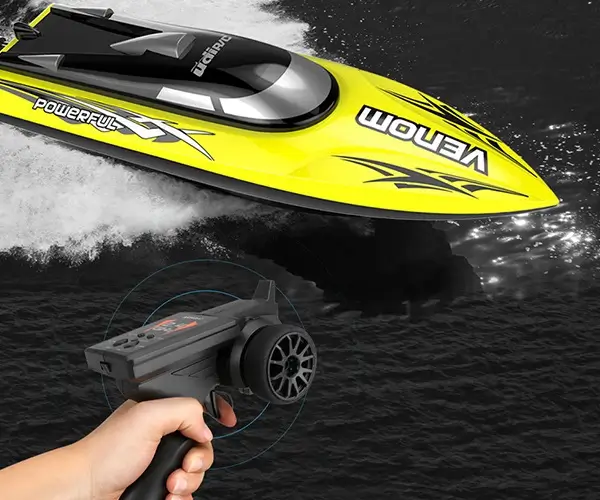Imagine a world where your ideas come to life with just a few components, some code, and a passion for innovation. That’s exactly what Arduino and servo motors make possible. Whether you're an aspiring engineer, a seasoned hobbyist, or someone simply eager to turn gears and circuits into impressive gadgets, this dynamic duo offers a universe of possibilities. Let’s delve into what makes Arduino paired with servo motors so captivating—and how you can start creating your own projects that move, respond, and wow.

The Magic of Arduino: An Introduction
At its core, Arduino is a versatile, user-friendly open-source electronics platform that simplifies the process of creating interactive objects. It comprises lightweight microcontroller boards—like the famous Arduino Uno—paired with a simple programming environment. What makes Arduino stand out is its accessibility; even those with minimal technical background can jump in with relative ease. The platform supports a vast community, offering endless tutorials, projects, and support.
Arduino’s strength lies in its ability to interact with sensors, LEDs, motors, and more. This makes it the perfect brain for robotic projects, home automation systems, art installations, or educational kits. Its programming language, based on C++, is straightforward enough for beginners yet powerful for advanced applications.
Enter the Servo Motor: Precision in Motion
A servo motor is a compact, high-precision actuator capable of rotational or linear movement according to input signals. Unlike simple DC motors that spin freely, servos are designed to hold a specific position, making them ideal for tasks requiring exact control. This explicit positioning is achieved through an internal feedback system—a small sensor called a potentiometer—that continuously measures the motor’s position.
Commonly used in radio-controlled vehicles, robotics, and automation devices, servos are versatile and straightforward to implement. They come in various sizes and torque capacities, from tiny micro servos perfect for lightweight applications to heavy-duty ones used in industrial robots.
The Perfect Pairing: Why Arduino and Servo Motor?
Combining Arduino with a servo motor creates a powerful, yet accessible, foundation for creating dynamic, responsive devices. You get the simplicity of Arduino’s programming environment paired with the precise control of the servo. This pairing is often the first step in many DIY robotics projects—from robotic arms and pan-tilt cameras to automated curtains and art installations.
One of the great aspects of this duo is the ease with which you can control a servo's position. Sending a PWM (pulse-width modulation) signal from Arduino tells the servo exactly where to go. With just a few lines of code, you can make the servo sweep back and forth, point to specific angles, or coordinate a series of movements for more complex mechanisms.
Getting Started: Your First Arduino Servo Project
Let’s begin a typical beginner’s journey. To set up your own Arduino-controlled servo, you’ll need:
An Arduino microcontroller board (such as Uno) A servo motor (like the SG90 or MG996R) Connecting wires A power source (typically the Arduino itself, supplemented by external power for larger servos) A computer with the Arduino IDE installed
The wiring is straightforward: connect the servo's power (usually red) to the 5V pin, ground (black or brown) to GND, and the control wire (orange or yellow) to one of the Arduino's PWM-compatible digital pins—say, pin 9.
Once wired, writing your first sketch (Arduino program) is simple. A basic example instructs the servo to move from 0° to 180° and back, creating a sweeping motion. Here's a snippet to illustrate:
#include Servo myServo; void setup() { myServo.attach(9); // Attach servo to pin 9 } void loop() { for (int pos = 0; pos <= 180; pos += 1) { myServo.write(pos); // tell servo to go to position in variable 'pos' delay(15); // waits 15ms for the servo to reach the position } for (int pos = 180; pos >= 0; pos -= 1) { myServo.write(pos); delay(15); } }
This simple code drives the servo back and forth, illustrating the fundamental control mechanism. As you progress, you’ll learn to synchronize multiple servos, incorporate sensors, or even build complex robotic systems.
Practical Applications: How Arduino and Servos Change the Game
This combination is not just for beginners. In advanced settings, it can help develop:
Robotic arms: Precise movement for pick-and-place tasks Pan-tilt camera systems: Automated surveillance or photography Automated models: Opening gates, adjusting solar panels, or controlling vents Art installations: Responsive sculptures that move to sound or light Educational kits: Hands-on learning about control systems and electronics
Overcoming Challenges: Power and Control
While the concept is simple, a few hurdles may arise. Servos can draw a significant amount of current, especially under load, which means the Arduino's onboard power might not suffice. Using an external power supply and ensuring common ground is essential to prevent erratic movements or reset issues.
Another consideration is the PWM signal. Although Arduino makes generating these signals straightforward, understanding timing nuances becomes crucial when coordinating multiple servos or precise movements. Libraries like Servo.h abstract much of this complexity, but diving deeper into PWM signals can unlock more advanced control schemes.
The Creative Spark
What’s most compelling about Arduino with servo motors is how it unlocks your creative potential. Suddenly, you’re not just programming LEDs or reading sensors—you’re building kinetic sculptures, animating models, or automating your environment. The tactile pleasure of moving parts responding to your code elevates the DIY experience to a form of artistic expression.
I hope you find this first part engaging! If you'd like, I can continue with the second part, covering more advanced projects, troubleshooting tips, and inspiration for further exploration.
Kpower has delivered professional drive system solutions to over 500 enterprise clients globally with products covering various fields such as Smart Home Systems, Automatic Electronics, Robotics, Precision Agriculture, Drones, and Industrial Automation.




































